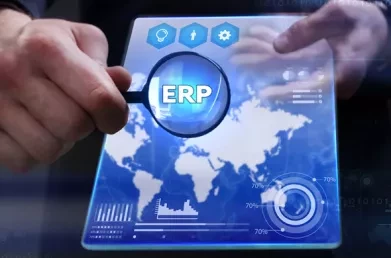Drive More Value from ERP - Extend the Footprint
In our experience, if there are functional gaps or data silos, sometimes the best course of action is to extend the legacy ERP system. This may not always be obvious or even popular with the client, but there are often significant benefits.
A client approached us recently looking for help to select a new ERP system. The scenario they described was quite common – different systems for finance and for inventory and purchasing, with predictable results in terms of silos of information, multiple versions of the truth, spreadsheet proliferation and poor reporting.
Upon investigation, it turned out that they had already implemented a well-known ERP system a number of years back – but only for finance and sales. Inventory and purchasing was managed using a home-grown MS Access system. The original intention had been to replace this system as a second phase of the ERP project. However, this had never happened – mainly because a badly managed implementation of finance and sales had left management and users with a poor opinion of the ERP system concerned.

Very soon it became clear that the best option for this client was not to select a new ERP system, but simply to implement the inventory, purchasing and reporting modules from their existing system. This meant upgrading the finance and sales modules, because our client had not kept their maintenance schedule up to date, but the overall cost of the project was still much less than if a new system had been purchased, and the disruption to the business was minimal compared to a new implementation.
This type of scenario is far from uncommon in our experience. Sometimes the initial implementation is broader in scope than just finance and sales, but many ERP projects end up having a second or subsequent phases, which never end up getting implemented. There are many reasons for this. As with our client above, sometimes the initial implementation runs into difficulty and is late or over-budget or fails to meet user expectations. This can result in pressure on budgets, resources and implementation fatigue – all of which militate against taking on the second or subsequent phases unless there is absolutely no choice.
When the subsequent ERP phases fail to materialise, the gap is filled by continuing to use the legacy solutions already in place, or sometimes by purchasing best-of-breed point solutions. This in turn can result either in islands of data or in difficult-to-maintain integration points. If this happens, eventually most organisations give up and start the cycle again by looking for a new ERP system, as in the example above.
In our experience, if there are functional gaps or data silos, sometimes the best course of action is to extend the legacy ERP system. This may not always be obvious or even popular with the client, but there are often significant benefits in terms of reduced licence and implementation costs compared to a full ERP replacement, and simplified training, since users will already be familiar with the legacy system. The big advantages over a best-of-breed approach are that there should be no integration issues to deal with and there is only one vendor to manage in the event that the new module(s) do not work as expected.
See also ERP VS Best of Breed: What You Need to Consider
Here is a list of functional areas generally available as part of an ERP suite, but which are often not implemented in the first phase of the project:
- Customer Relationship Management (CRM)
- Sales Force Automation (SFA)
- Business Intelligence
- Planning and Scheduling
- Production
- Preventive Maintenance
- Human Resource Management (HRM)
Before looking at options to replace or upgrade legacy solutions in any of these areas, it is almost always worth getting some independent advice and then talking to your ERP vendor.
This blog was written by Sean Jackson, Managing Director. If you would like further information on optimising your ERP system or any other aspect of ERP please send an e-mail to Sean Jackson.


